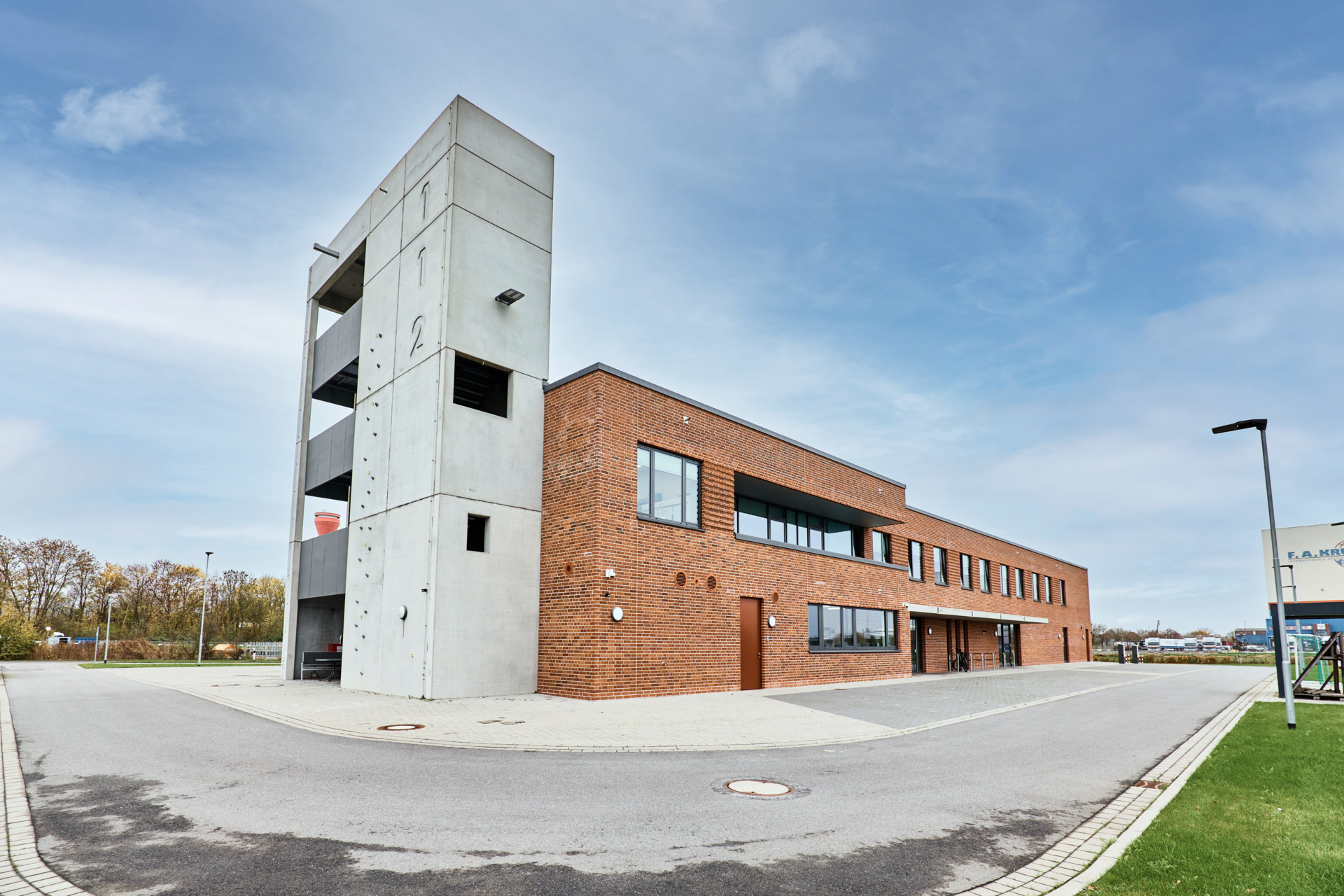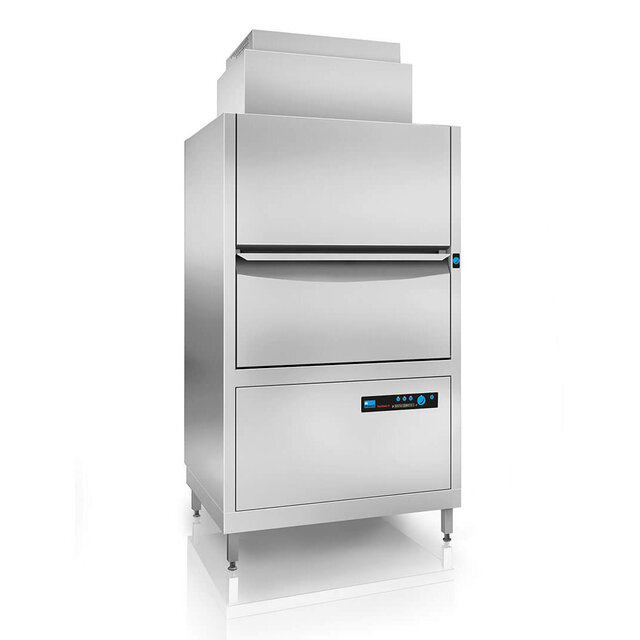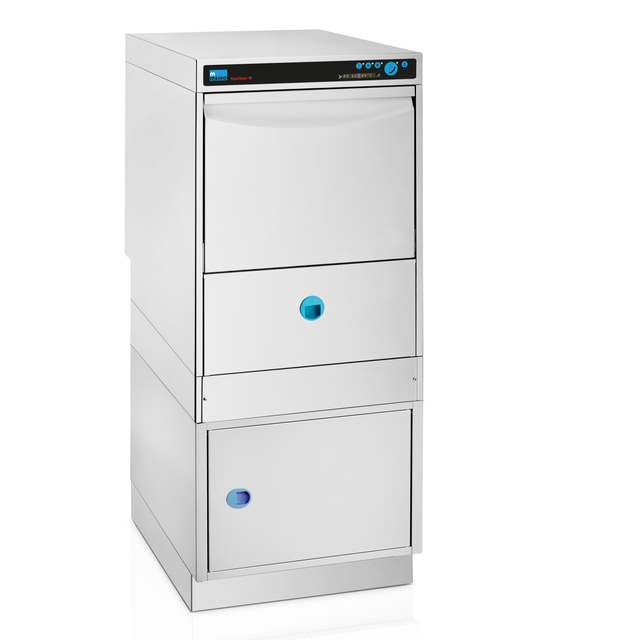A new station became urgently necessary in Brunsbüttel at the end of the 2010s, as suitable workshops and office spaces were lacking. In addition, the small social area was unable to keep up with the growing number of full-time staff. In 2022, the firefighters from the full-time station unit and the fire brigade south finally moved into a modern station tailored to their needs. The following areas were realised on a total of 2,300 square meters: an appliance room with spaces for five fire appliances, a washing hall, various workshop rooms, a four-storey escape and exercise stairwell, as well as sleeping quarters, office, lounge and training rooms for the brigade staff.
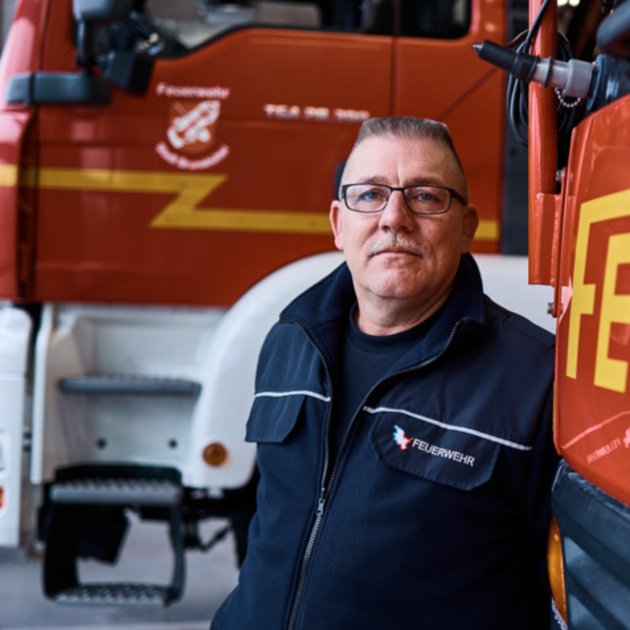
Since the new station was built in 2022, we’ve felt more confident at work.
Thomas Herbach, respiratory protection officer at Brunsbüttel fire service
CLEANING EQUIPMENT FOR FIRE SERVICES AND INDUSTRIAL COMPANIES
Per station unit, two SCBA technicians clean the equipment for their firefighter colleagues. At the fire station south’s SCBA workshop, they also clean and disinfect respiratory protective equipment for industrial companies. ‘Since the new station was built in 2022, we’ve felt more confident at work,’ explains respiratory protection officer Thomas Herbach. The reason: the time-consuming, not entirely harmless manual process has been replaced with an efficient, two-step one.
In his role as respiratory protection officer, Herbach is responsible for the workflow in the SCBA workshop. He was involved in planning, calling in MEIKO for the expert advice needed. Thomas Herbach looks back with satisfaction: ‘The technical expertise of the MEIKO employee during meetings with the project managers from the building authority and the architectural firm were game-changing when it came to planning our SCBA workshop.’
TWO-STEP PROCESS: FIRST PRE-CLEANING, THEN CLEANING AND DISINFECTION
First, the respiratory protective equipment is roughly pre-cleaned, then the disassembled BA masks are cleaned and disinfected. It all starts with the arrival of contaminated personal protective equipment (PPE) in the dirty area. In an anteroom, the SCBA harnesses delivered in boxes or plastic bags are packed in trays together with the bottles and regulators. In the next step, these trays are transported to the wet room.
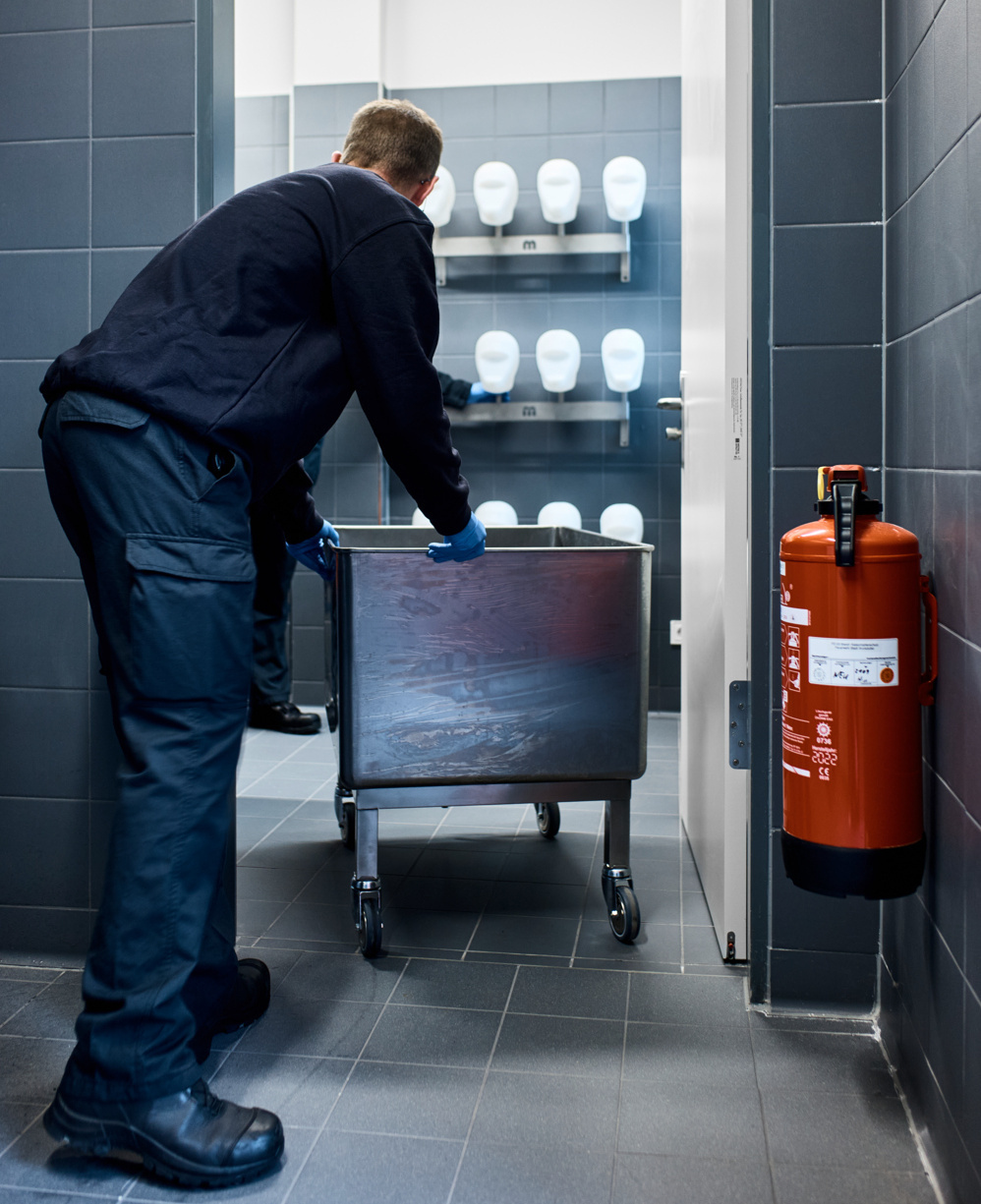
There, a visual check is performed on the extraction table. The SCBA technicians load the TopClean D pre-cleaning washer with four complete SCBA harnesses, connect them with the pressurisation and select the programme depending on the degree of soiling. If the equipment returns from a call-out heavily soiled, they choose programme 3, which runs for 16 minutes. If it is only lightly soiled, programme 1, running four minutes, is enough to get the job done.
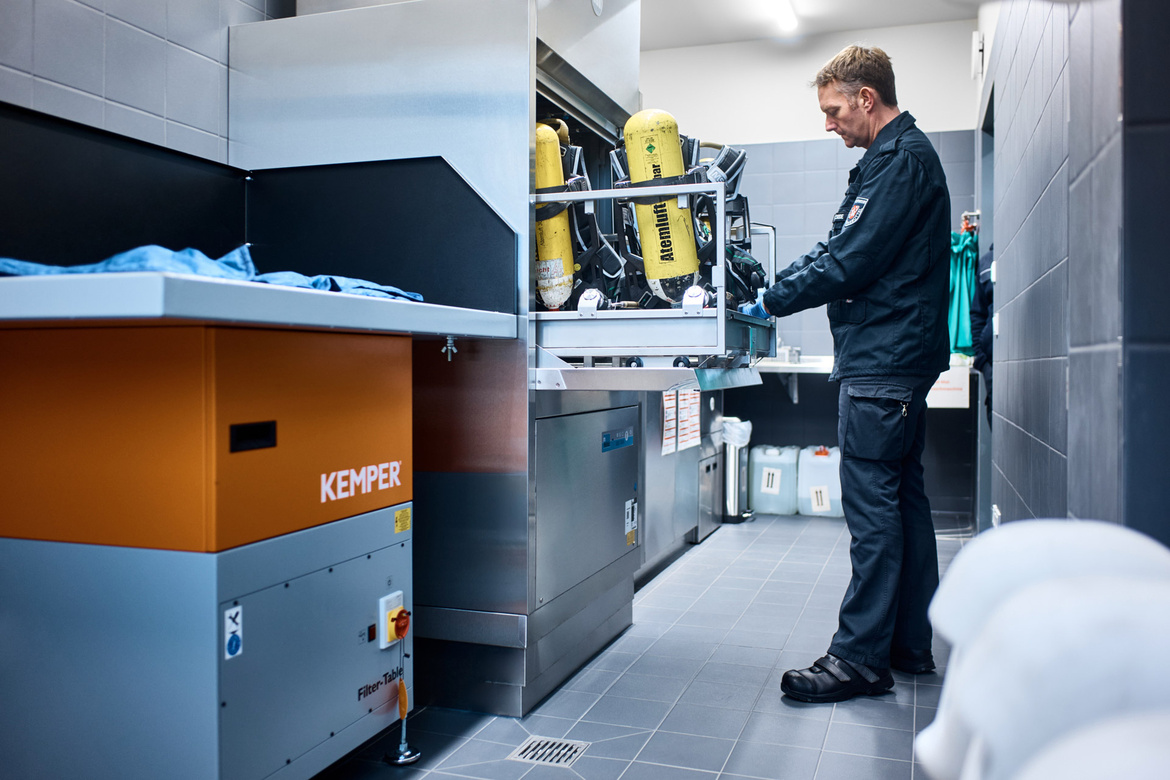
Now, the BA masks are stretched out onto plastic heads and the dirt is washed off the outside in four, eight or 16 minutes. During this process, the inside does not come into contact with toxic substances. A dozen BA masks can be cleaned on the outside at once.
Next, the SCBA technicians disassemble the first four BA masks. They place the small parts in the small parts racks and hang the BA masks up using the rack handles in the TopClean M washer-disinfector, where the BA masks undergo intensive cleaning and disinfection inside and out.

OCCUPATIONAL SAFETY COMES FIRST DURING PLANNING
A lot of work gets done in the workshop rooms. On the one hand, the SCBA technicians have to reliably remove carcinogens from BA masks, and on the other hand they also maintain masks from local industrial companies. They should come into as little contact as possible with the toxic materials. After all, industrial masks not only demonstrably carry carcinogens, but also numerous other toxic materials.
To ensure occupational safety, not only were the dirty and clean areas physically separated, but state-of-the-art appliances were also selected during planning. According to Herbach, the technology fully met their expectations: ‘The TopClean D delivers exactly the cleaning results that we were promised, namely an outstanding preliminary wash. It’s a big help for us and makes a huge difference compared with the previous manual process.’ The SCBA technicians can pre-clean four complete SCBA harnesses, including regulators and compressed air bottles, in a single wash cycle. Compared to the previous manual process, they spend significantly less time with the contaminated PPE. In addition, today they no longer have to inhale fumes from the cleaning chemicals dissolved in the water.
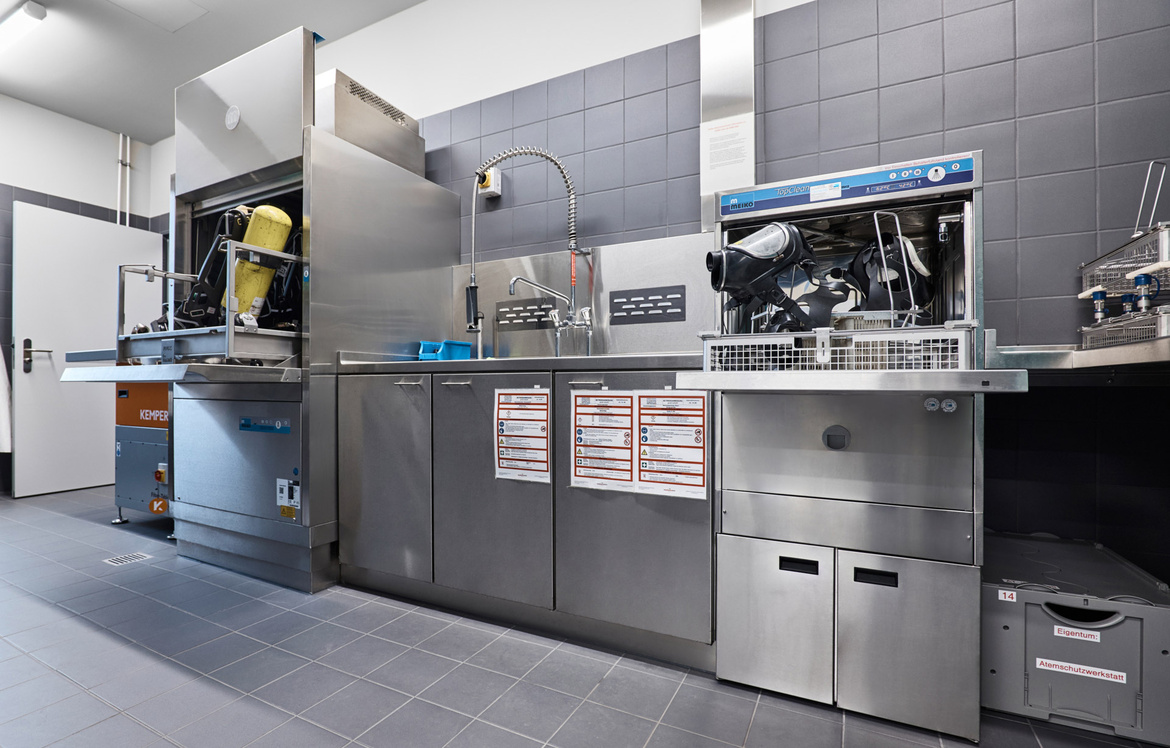
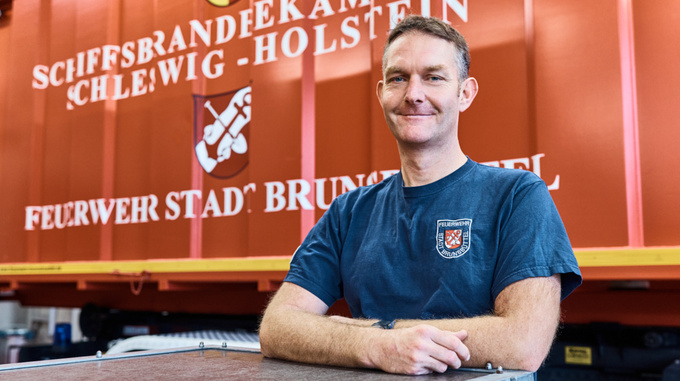
Combined with the TopClean M disinfector, the workflow in the wet area is extremely smooth, leaving the respiratory protection officer completely satisfied with the increased throughput and improved occupational safety in the workshop. ‘Overall, we need much less time now: when cleaning 30 masks, we save about a half a day’s work with the two-step machine-based MEIKO process. The SCBA technicians are visibly more relaxed because they come into less contact with contaminated equipment.’
Every three years, they undergo a medical examination. During this checkup, the doctor examines their suitability for respiratory protection and working at heights, also assessing their ability to drive. These checks take place annually once they turn 50. To date, there haven’t been any noticeable problems among the colleagues of Brunsbüttel’s fire brigade south. Knock on wood!
BRINGING ALL STAKEHOLDERS TO THE TABLE EARLY ON
Ultimately, the respiratory protection officer is satisfied with the result of the project. Compared with before, the station offers significantly better working conditions and faster workflows – plus increased occupational safety. ‘I highly recommend bringing all the stakeholders to the table as early as possible when planning a new fire station and involving them in the planning process. Besides the architects and employees from the building authority, that’s mainly us firefighters. After all, we’re familiar with our processes and know what’s helpful and practical for us. Last but not least, the machine manufacturers responsible for equipping the different areas should also be consulted. Thanks to MEIKO we’ve implemented an efficient, ergonomic workflow in our workshop. During the planning process, we frequently received valuable advice. MEIKO’s expert team is familiar with all the current regulations and provided us with crucial support in realising the new SCBA workshop.’
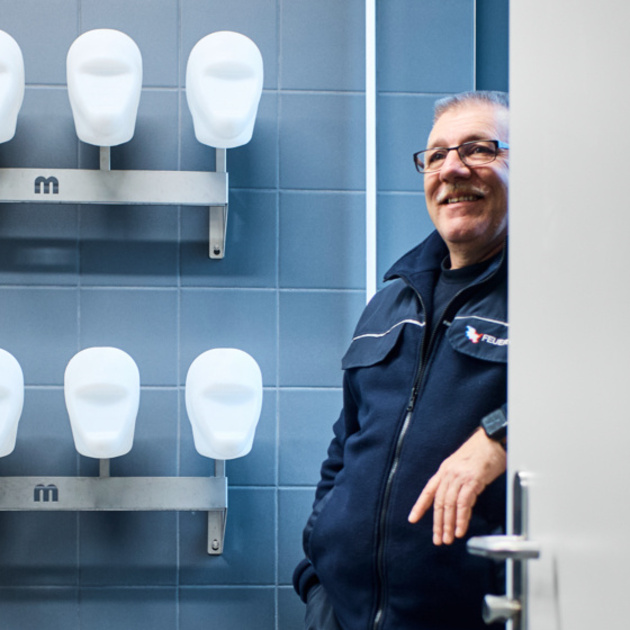
The technical expertise of the MEIKO employee during meetings with the project managers from the building authority and the architectural firm were game-changing when it came to planning our SCBA workshop.
Thomas Herbach,
respiratory protection officer at Brunsbüttel fire service
